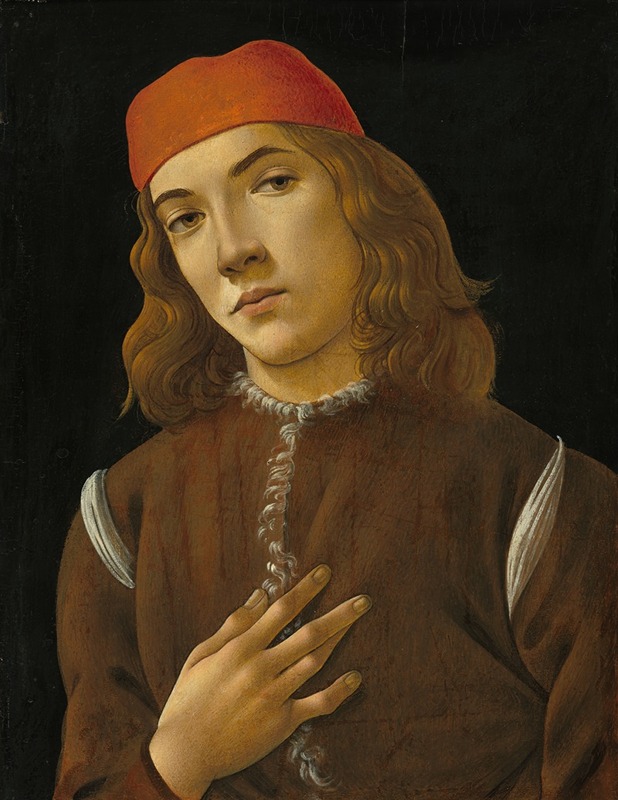
Portrait of a Youth
A hand-painted replica of Sandro Botticelli’s masterpiece Portrait of a Youth, meticulously crafted by professional artists to capture the true essence of the original. Each piece is created with museum-quality canvas and rare mineral pigments, carefully painted by experienced artists with delicate brushstrokes and rich, layered colors to perfectly recreate the texture of the original artwork. Unlike machine-printed reproductions, this hand-painted version brings the painting to life, infused with the artist’s emotions and skill in every stroke. Whether for personal collection or home decoration, it instantly elevates the artistic atmosphere of any space.
Sandro Botticelli, an eminent Italian painter of the Early Renaissance, is renowned for his contributions to art during the 15th century. Among his numerous works, "Portrait of a Youth" stands out as a significant example of his portraiture, although specific details about the painting, such as its exact date of creation and the identity of the sitter, remain elusive.
Botticelli was born in Florence in 1445 and became one of the most prominent artists in the city, which was a hub of Renaissance culture and art. He was known for his distinctive style that combined elements of Gothic art with the emerging naturalism of the Renaissance. His works often featured delicate figures, flowing lines, and a keen attention to detail, characteristics that are evident in "Portrait of a Youth."
"Portrait of a Youth" is believed to have been painted during the late 15th century, a period when Botticelli was at the height of his career. The painting depicts a young man, captured with a sense of elegance and introspection that is typical of Botticelli's portraiture. The youth is portrayed with a serene expression, his features rendered with the artist's characteristic grace and subtlety. The background is simple, allowing the viewer to focus entirely on the subject.
The identity of the young man in the portrait is unknown, which is not uncommon for portraits from this period. During the Renaissance, portraits were often commissioned by wealthy patrons or families to commemorate individuals or to serve as diplomatic gifts. However, without specific documentation, the exact identity of the sitter in "Portrait of a Youth" remains a matter of speculation.
Botticelli's approach to portraiture was innovative for his time. He often infused his portraits with a sense of individuality and psychological depth, moving beyond the more rigid and formal representations that were common in earlier periods. This shift reflected the broader Renaissance interest in humanism and the exploration of individual identity.
The painting is executed with tempera on panel, a medium commonly used during the Renaissance. Botticelli's mastery of this technique is evident in the smooth transitions of color and the delicate rendering of the youth's features. The use of light and shadow adds a three-dimensional quality to the portrait, enhancing its lifelike appearance.
"Portrait of a Youth" is housed in the National Gallery of Art in Washington, D.C., where it continues to be admired by visitors from around the world. The painting is a testament to Botticelli's skill as a portraitist and his ability to capture the essence of his subjects with elegance and sensitivity.
In summary, "Portrait of a Youth" by Sandro Botticelli is a quintessential example of Renaissance portraiture, showcasing the artist's talent for capturing the human spirit. Despite the mystery surrounding the identity of the sitter, the painting remains a valuable piece of art history, reflecting the cultural and artistic values of its time.


















